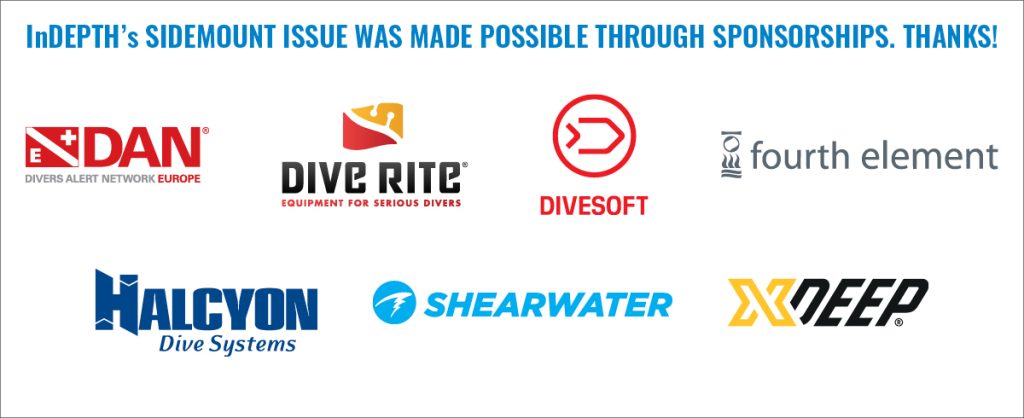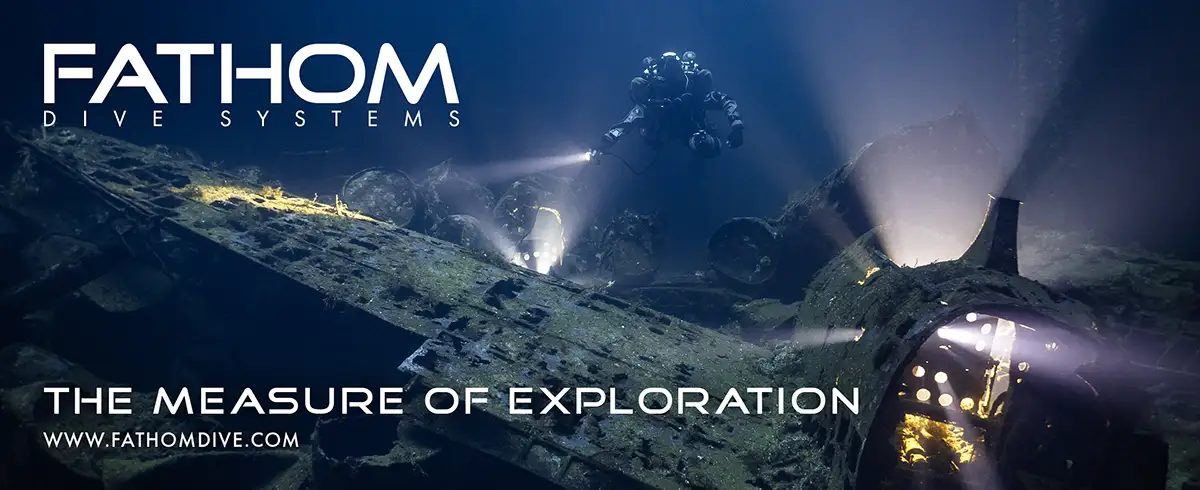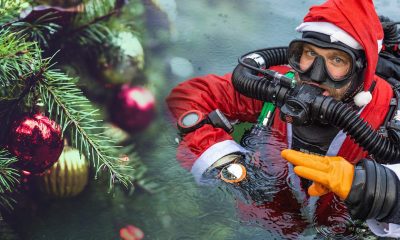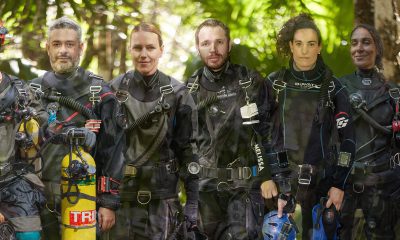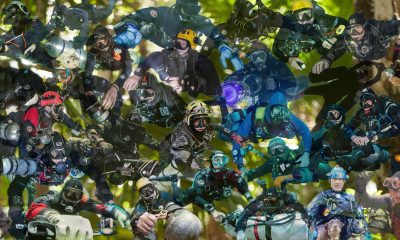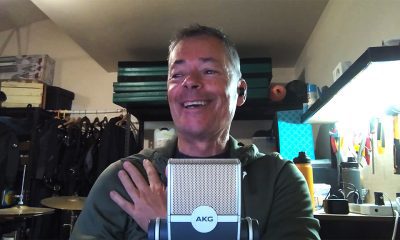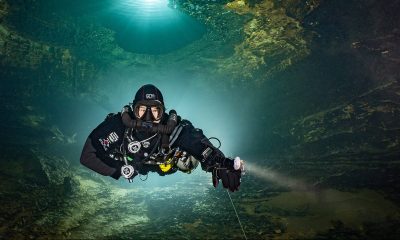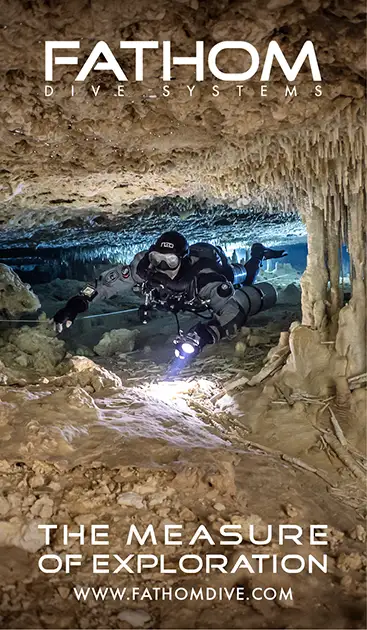Community
The Who’s Who of Sidemount

Christophe Le Maillot
Chris is a cave explorer, a cave and sidemount instructor and instructor evaluator, a DPV and RB80 rebreather instructor and co-owner of Zero Gravity dive center in Puerto Aventuras, Mexico. He has over 30 years of diving experience and has conducted more than 7000 cave dives in Mexico, Belize, Honduras, France, Bosnia & Herzegovina, Italy, Brazil, China, Australia and USA. He was the founding member of Grupo de Exploracion Ox Bel Ha (GEO) (1998-2001), a founding member of the Mexico Cave Exploration Project (MCEP), and a member and research diver for the Centro Investigador del Sistema Acuifero de Quintana Roo (CINDAQ), a Mexico NGO. Chris was instrumental in developing the Global Underwater Explorers (GUE) Sidemount Diver program.
Interview by Michael Menduno
What is sidemount to you?
Sidemount is just another gear configuration that helps me to achieve specific objectives on some dives. I would extend this point to the use of DPVs, rebreathers, back-mounted configuration, stages and sidemount rebreathers on certain dives. You pick and choose the right tool, type thing. It is just a mean to be polyvalent underwater, and adding more strings to your diving bow so to speak, nothing more.
Was there an epiphany moment for you?
To be honest, no. Historically, people have been sidemounting here since the 1980s. I believe that it had something to do with the configuration and the type of caves that we have here. It was and still is quite practical, as some of the caves are quite intricate and need to be dived in sidemount rather than backmount- sometimes just to travel beyond that one restriction.
When Fred [Fred Devos, co-owner of Zero Gravity] and I first arrived here in 1996, we did our cave training through CEDÁM Dive Center with Chuck Stevens. Chuck and Mike Madden were in the middle of exploring Nohoch Nah Chich. All their exploration was in sidemount, so we quickly got the idea that this was perhaps a good thing to do. We were trained in backmount, but, sidemount was definitely the must-have equipment configuration if you wanted to do some exploration. That’s how we really got introduced to sidemount.
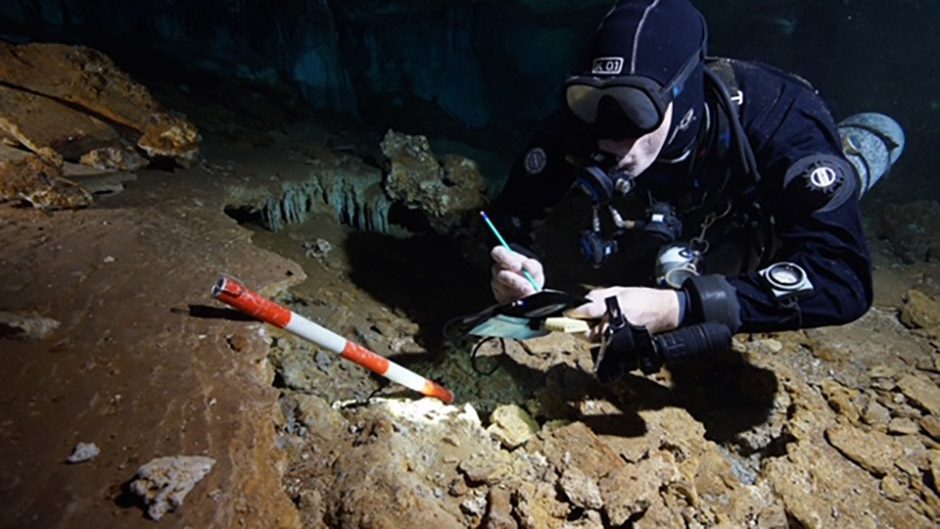
It has enabled you to go to places you couldn’t reach otherwise.
Yes, no question about it. Also, keep in mind that at the time, some caves were difficult to access due to limited roads. So, a lot of time was spent hiking equipment in the jungle or packing mules and horses with gear. Single tanks were a lot easier to deal with. So overall, it was the most appropriate configuration for what we wanted to do at the time, which was exploration!
What were your considerations in creating the GUE sidemount program?
The main idea with this was adding a formal teaching structure to something that we have been doing for a long time. There was a great amount of interest from GUE divers too. Some were already diving in small caves, or remote locations in different parts of the world. This led to a collaborative work effort between a few of us GUE people. I don’t really want to be taking too much credit here. Andrea Marassich, Osama Gobara and Fred had a lot to do with this too. On the gear developing side of things, we were happy with all the help from Halcyon Mfg especially Ken Charlesworth. Ken is a keen sidemount diver in Florida. We wanted something that was more appropriate with diving aluminum or smaller steel cylinders (like the Faber 85s). A wing with sufficient lift of course, an easy to adjust harness, streamlined and practical, something that allowed us to swim through the most intricate part of the cave without too much complications.
But I understand that the course is not specific to the Halcyon sidemount system, it can be done in a suitable system. Right?
Yes. It just requires a system appropriate for the type of diving we’re going to be doing. Of course, there are specificities needed with equipment like with any other training program. But, it does not relate to a particular gear manufacturer.
So with regards to the GUE sidemount program, are there any, I don’t know, special or unique aspects of the program? I’m assuming it’s got the GUE flavor, of course. It is a GUE course.
We have always looked at cave sidemount along with Cave DPV and Survey as more of advanced cave diving techniques/programs. We know for a fact that it takes time to hone skills, and to understand the cave environment. We still believe that there is nothing wrong starting with the well-rounded, easy to adjust, versatile, and proven back-mount configuration for cave diving.
In this sense, a diver entering the GUE sidemount cave program has already gone through substantial GUE cave training—Cave 1, Cave 2, sometimes Cave Survey and Cave DPV- in addition to personal experience dives—a well known GUE requirement between training levels.
So, when we teach the sidemount class, students are already diving in caves that are technically more challenging and quite naturally this eventually leads them to caves where the use of sidemount is the most appropriate configuration.
I think that this is the basic idea behind continuing education. A slow and progressive approach to learning with plenty of time in-between levels to gain proficiency through different personal diving experiences.
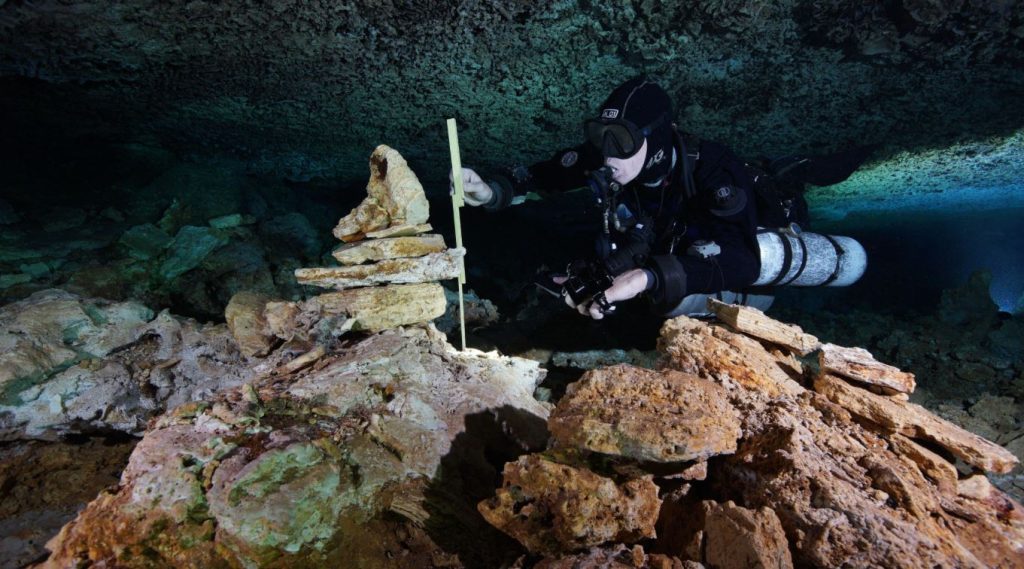
Do you see GUE Sidemount eventually being offered at lower level, kind of like what GUE did with their CCR program, making it available to anyone with Tech 1?
Yeah, I don’t know.
Maybe, but again we don’t really know what the future holds. And, things change, you know that, Michael. But as long as it makes sense and that it is consistent with the rest of GUE’s philosophy—and just not following a trend—then many of us would be willing to consider new training opportunities, for sure.
Things are definitely evolving.
Things are always evolving, and not just with diving. GUE has come a long way in 25 years. Plenty of interesting technologies emerging. It is all quite engaging, really.
In the future, what will we need to know to keep up with studying and exploring underwater? GUE has always been quite dynamic this way, in giving divers the training and knowledge necessary to pursue their different diving activities.
I hadn’t been to Mexico for a while. But when I visited last year for diving I was surprised. We pulled up to Ponderosa. In the past, It seems like there would be 10 twinsets to 1-2 sidemount rigs. This time, there were 10 sidemounters to every couple of backmounters. I mean wow, it was really noticeable.
That’s a fair observation. I mean it’s funny to see that because we’ve been sidemounting for so long but it’s just the way it is now. Sidemount has become very popular. But a more recent trend has also seen some of these long-time sidemount divers only now discovering benefits of backmount cave diving.
Keep in mind that 99.5% of all the caves here—and we’ve got well over 1,200 kilometers of it—are all backmountable. So, the caves did not suddenly start shrinking.
Yeah, there’s plenty of running room.
Many of the caves here could accommodate a 747 airliner (or two for Ox Bel Ha). But at the end, whatever people feel comfortable with and enjoy doing.
If people are passionate about their sidemount system/wing /rebreather/sidemount rebreather etc. great. It’s good to be passionate about something in life. But we are really passionate about caves, and we are fortunate here to visit them every day of the year.
Thank you Chris! Please say hi to them for me. I’ll be down there before long.
Return to: The Who’s Who of Sidemount
DIVE DEEPER
InDEPTH: Data for Divers: Mexican Explorers Go Digital to Chart Riviera Maya by Michael Menduno
InDEPTH: CINDAQ And DroneDeploy
